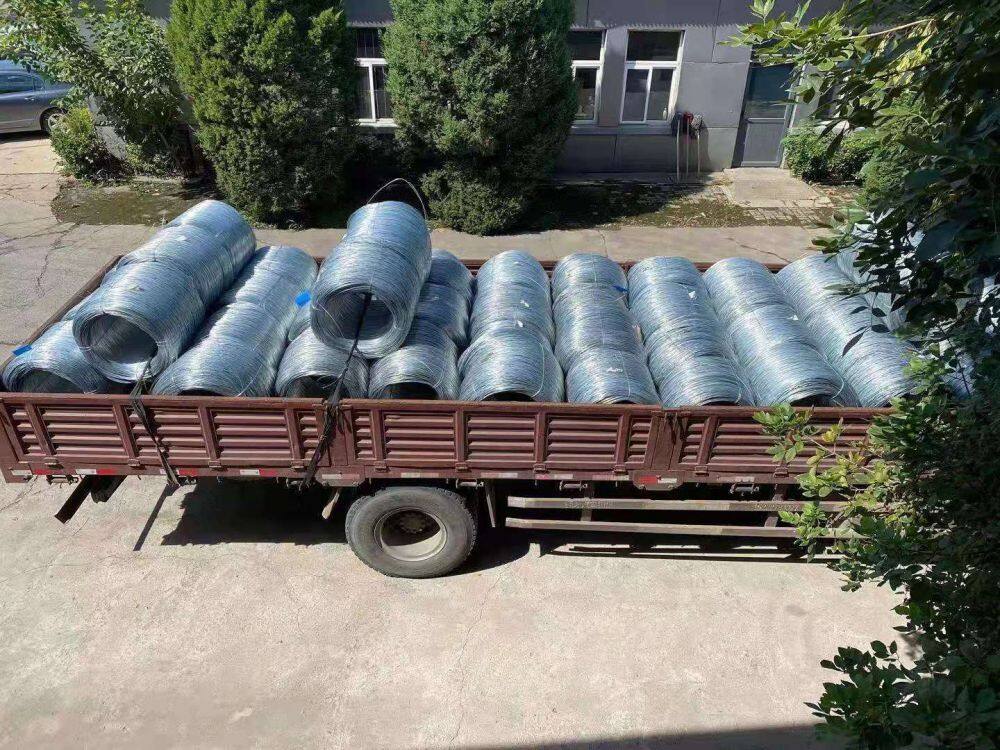| Purchase Qty. / Reference FOB Price | |
|---|---|
| 2 long ton | US $900 |
| Production Capacity: | 20000 |
|---|---|
| Payment Terms: | LC, T/T |
Zinc coating on steel wire is a metal protective layer applied to surface of steel wire. It improves its corrosion resistance by uniformly depositing a layer of zinc on the surface of steel wire by electroplating/hot-dip galvanizing. Galvanized steel wire is usually used in construction, agriculture, transportation and other fields. The zinc layer covering its surface can effectively prevent the erosion of oxygen, water and chemicals. Galvanized steel wire not only has excellent corrosion resistance, but also has high strength and toughness, which makes it widely used in various projects.

The functions of galvanized layer are: 1. Anti-corrosion: Zinc has good electrochemical activity and can react with oxygen in the air to form a dense zinc oxide film, which can effectively isolate steel wire from oxygen, moisture and other corrosive substances in external environment, slow down rust and corrosion rate of steel wire, and extend service life of steel wire.
2. Enhance wear resistance: The galvanized layer can improve hardness and wear resistance of steel wire surface to a certain extent, reduce wear caused by friction between steel wire and other objects during use, and maintain mechanical properties and appearance quality of the steel wire.
The main process of steel wire galvanizing layer, 1. Hot dip galvanizing: immerse pretreated bare steel wire in molten zinc liquid to form a continuous and dense zinc layer on surface of steel wire. The hot dip galvanizing layer is thicker and has better protection against corrosion performance. It is suitable for occasions with high anti-corrosion requirements and harsh use environment, such as construction steel wire, bridge cables, etc.
2. Electrogalvanizing: Through principle of electrochemistry, in the electroplating solution containing zinc ions, steel wire is used as cathode, and a certain current is applied to reduce and deposit zinc ions on surface of steel wire to form a galvanized layer. The thickness of electroplated zinc layer is relatively thin, but surface is smooth and uniform. It is suitable for occasions with high requirements for appearance quality and relatively low anti-corrosion requirements, such as steel wire in electronic components, spring steel wire, etc.
1. Thickness detection: Commonly used detection methods are gravimetric test method and gas volumetric method.
2. Adhesion detection: Generally, methods such as bending test are used to evaluate bonding force between galvanized layer and steel wire substrate.
3. Composition analysis: Determine content and proportion of various elements in galvanized layer through chemical analysis, spectral analysis and other methods. The chemical analysis method can accurately determine content of main elements in galvanized layer, but operation is more cumbersome; the spectral analysis method can quickly and non-destructively analyze elemental composition of galvanized layer.
In addition, galvanized steel wire is popular because of its bright and beautiful appearance, long service life and low maintenance cost. During production process, thickness and uniformity of galvanized layer need to be strictly controlled to ensure that quality and performance of steel wire meet standard requirements. Galvanized steel wire not only improves corrosion resistance of steel and extends service life of steel, but also provides reliable guarantee for engineering construction in related fields.
Contact Us | User Agreement | Privacy Policy | 加入會員
Service Tel: (+86)0571-87774297